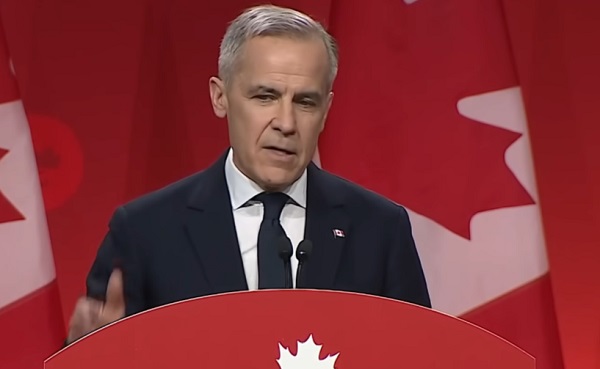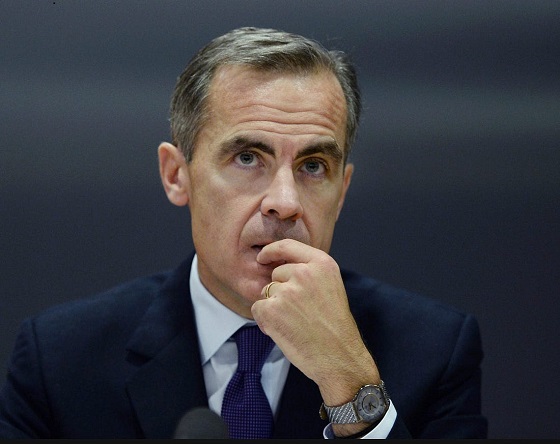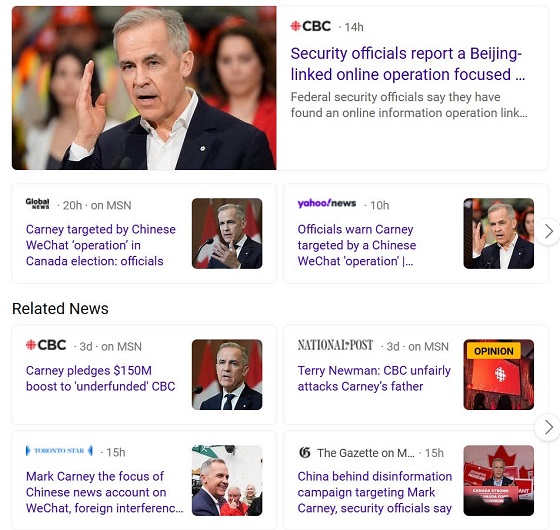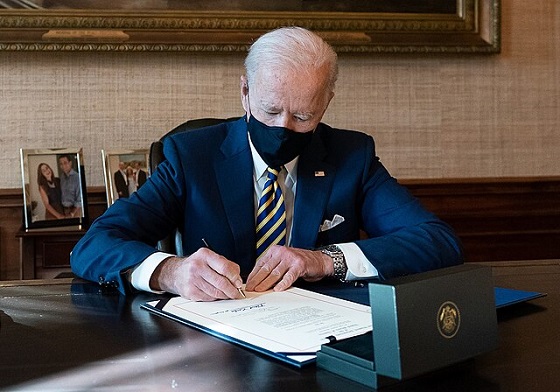Business
Trump’s tariff plan replaces free trade with balanced trade. Globalists hate that.

From LifeSiteNews
By Frank Wright
While globalists screech that Trump has descended into ‘madness,’ his ‘Liberation Day’ tariff plan that has shocked global markets is actually rooted in the combination of two economic theories that argue for ‘balanced’ trade over ‘free’ trade.
We are used to seeing the effects of Trump Derangement Syndrome in the blue-haired, red-faced hysterics who call the President “Orange Hitler.” Yet the introduction of tariffs on “Liberation Day” has seen the constituency of the differently-saned explode in a fit of rage at this “tariff madness.”
As global markets “plunge,” Trump replied to critics that “sometimes you have to take medicine to fix something.”
“We have been treated so badly by other countries – because we had stupid leadership that allowed this to happen. They took our businesses, they took our money, they took our jobs,” he says, saying American wealth has been effectively “moved” abroad. Trump promised that this “will eventually be straightened out – and our country will be solid and strong again”.
Taking Trump’s medicine
Is his remedy worse than the disease? MSNBC said the crash in global stock markets was the “cascading effect of stupid” tariffs imposed by Trump on U.S. imports. Britain’s Sky News came out swinging too, saying they were “the biggest assault on global trade since World War Two.”
Stocks in the USA, London, Europe, China and across Asia have “plummeted,” as the BBC and others have reported. The U.K.’s Financial Times said “political pressure” resulting from the painful “medicine” will mean “Trump’s tariffs won’t last long.” Yet the liberal bastion of The Guardian dared to suggest there may be a “masterplan” in “shaking up the global economy.”
Looking beyond the hysterical headlines, one writer on SubStack – Tree of Woe – has read the book on “scaled tariffs” which explains the method in Trump’s so-called madness.
1. Trump delivers
Tree of Woe, who recommends the medicine of “muscular Christianity” to combat the sickness of our times, introduces his readers to the fact that Trump campaigned on: “…plac[ing] tariffs that would raise revenue, protect American manufacturing, and restore balanced trade to our global economy.”
This was followed up on April 2 with the imposition of scaled tariffs – called “Liberation Day for American Trade” by Trump:
As Tree of Woe notes, the reaction from the globalist media was exceptional – even for them:
Soon after the unveiling of Trump’s executive order, the forces of neoliberal globalism orchestrated a counterattack of such rhetorical fierceness and economic malignity that it is virtually unparalleled in the history of fiercely malign economic rhetoric.
Anything seen as a threat to the liberal globalist forced consensus is branded as stupid, extremist or destructive. And so it was with the tariffs, whose aim is to replace imbalance and deepening debt with fair trade – and sustainable prosperity.
2. Theoretical basis for tariffs
Woe then shows how a book on economics provides the “theoretical basis for the Liberation Day tariffs.”
The book is called “Balanced Trade: Ending the Unbearable Cost of America’s Trade Deficits.” It was published in 2014 by three brothers – Jesse, Howard and the late Raymond Richman.
Jesse Richman had first published on “The Scaled Tariff” as a method of “producing balanced trade” in 2011.
As Tree of Woe explains, “…the book challenges the orthodox theory that free trade is always beneficial and argues for an alternate policy they call balanced trade.” He quotes the Richman brothers’ own explanation:
For the last several decades, the United States has generally played a cooperative strategy on trade with China and other[s]… U.S. markets have been open to Chinese goods…American leaders selected free trade on the basis of the (false) hope that China would reciprocate by opening its markets to American firms.
‘Free trade’ = American debt
Did China “liberalize” along with the rest of the global system – as Clinton prophesied in the 1990s?
The answer is no. Is this market balanced? The Richmans say, “In return for Chinese products, Americans go ever deeper into debt.”
Debt is a major problem here. The U.S. must refinance a quarter of its national debt – 9 trillion dollars – in 2025 and must do the same for a total of 28 trillion dollars in debt over the next four years. How can Americans reverse this decline?
The aptly named Richmans proposed one solution: “The scaled tariff.”
Extraordinary nonsense?
Does this add up to an answer? U.S. author James Surowiecki is billed as “the man who cracked the math” on Trump’s tariffs. He said the tariffs were “absurd,” and “based on imaginary numbers” – leading to a “woefully simplistic” view of world trade whose aim of balancing it was “an impossible, and not even desirable, goal.”
4. Doing the math on tariffs
Yet it seems it is Mr Surowiecki’s sums which do not add up. As Tree of Woe explains:
Now, let’s compare the Richmans’ approach to the Liberation Day tariff formula that Surowiecki called ‘extraordinary nonsense.’
The Liberation Day tariff formula takes the U.S. trade deficit with that country and dividing it by the value of the country’s exports to the United States, then divides that value in half. For instance, if China had a trade deficit with the US of $298 billion, and exports of $427 billion, then 0.5 x $298 billion / $427 billion) ~ 35%.
Do you see? Trump’s Liberation Day tariffs are calculated with the exact same formula as the Richmans’ scaled tariffs.
Tree of Woe explains:
In fact, if you read Trump’s executive order, it reads as if it was written by the Richmans.
Rarely in the history of presidential policy has a scholars policy formulation been so precisely followed.
He then supplies a little more detail:
The only difference is that Trump has also included a national strategic tariff of 10% as a baseline.
Where does this come from? Again, Tree of Woe shows it is inspired by another economist.
Trump trade policy is simply Ian Fletcher’s Free Trade Doesn’t Work combined with the Richmans’ Balanced Trade!
Why are these two models used by Trump?
The difference between the two is fundamentally a difference in priorities.
Fletcher prioritizes protection of key industry, while the Richmans emphasize reciprocity in trade flows.
5. The goal is balanced trade
So what does this mean in practice?
The Trump Administration has hedged its position – it’s adopted the scaled tariff in full, but with a low 10% national strategic tariff (Fletcher recommended 25%).
What is the overall goal? “Balanced trade,” as Tree of Woe puts it, combined with mutual or reciprocal trade agreements.
Both the Richmans’ book and the Trump Administration’s executive order offer the same answer here. Since the goal is not to achieve ‘free trade,’ it is to achieve balanced trade, therefore the method by which this is achieved is not “reciprocity of tariffs” but reciprocity of trade flows.
Conclusion: Balancing power
The wider foreign policy of the Trump administration is heavily influenced by realists like Dr. Sumantra Maitra, whose central point is that “power begs to be balanced.” These are tariffs which correct imbalance in trade and will reduce or even vanish where a balance is reached.
They punish “unfair” trade:
When trade is balanced, tariffs go to zero (or to 10%, in the Trump version). It’s clean, it’s efficient, and it’s effective.
Thus, Trump’s tariffs are reciprocal tariffs – but what they reciprocate against is unfair trade practice in generally, evidenced by an imbalance of trade, and not tariffs specifically.
Rebalancing of strategic power in trade as in diplomacy is the principle here. This is not only a method to a madness but now resembles a recipe for sanity and prosperity.
So there you have it. Far from being ‘extraordinary nonsense,’ Trump’s trade policy is in fact a careful implementation of trade policies that have been developed and detailed at book-length.
One of the cheerleaders of the chorus of disapproval – James Surowiecki writes for the globalist magazine The Atlantic.
He is the author of a 2005 book called “The Wisdom of Crowds.” In it, he spoke of the wisdom of the many versus that of the few. If balanced trade restores the American dream, why does he stand against the cause of the majority of American people?
Is this a wise crowd he leads? It is certainly shouting the loudest. Yet the numbers behind the tariffs are not imaginary, and it seems strange wisdom indeed to call balanced trade and the reduction of national debt an “insane goal.”
Tree of Woe was asked for comment. This is what he said: “America has not pursued a policy of balanced trade in almost a century. The pressure on the White House to revert back to our ordinary course of business is enormous. It remains to be seen whether President Trump will be able to sustain his tariff policy in the face of opposition from the economic elite. One thing is certain: America will never be great again if we don’t re-industrialize.”
You can read The Tree of Woe’s full report here.
Alberta
Made in Alberta! Province makes it easier to support local products with Buy Local program

Show your Alberta side. Buy Local. |
When the going gets tough, Albertans stick together. That’s why Alberta’s government is launching a new campaign to benefit hard-working Albertans.
Global uncertainty is threatening the livelihoods of hard-working Alberta farmers, ranchers, processors and their families. The ‘Buy Local’ campaign, recently launched by Alberta’s government, encourages consumers to eat, drink and buy local to show our unified support for the province’s agriculture and food industry.
The government’s ‘Buy Local’ campaign encourages consumers to buy products from Alberta’s hard-working farmers, ranchers and food processors that produce safe, nutritious food for Albertans, Canadians and the world.
“It’s time to let these hard-working Albertans know we have their back. Now, more than ever, we need to shop local and buy made-in-Alberta products. The next time you are grocery shopping or go out for dinner or a drink with your friends or family, support local to demonstrate your Alberta pride. We are pleased tariffs don’t impact the ag industry right now and will keep advocating for our ag industry.”
Alberta’s government supports consumer choice. We are providing tools to help folks easily identify Alberta- and Canadian-made foods and products. Choosing local products keeps Albertans’ hard-earned dollars in our province. Whether it is farm-fresh vegetables, potatoes, honey, craft beer, frozen food or our world-renowned beef, Alberta has an abundance of fresh foods produced right on our doorstep.
Quick facts
- This summer, Albertans can support local at more than 150 farmers’ markets across the province and meet the folks who make, bake and grow our food.
- In March 2023, the Alberta government launched the ‘Made in Alberta’ voluntary food and beverage labelling program to support local agriculture and food sectors.
- Through direct connections with processors, the program has created the momentum to continue expanding consumer awareness about the ‘Made in Alberta’ label to help shoppers quickly identify foods and beverages produced in our province.
- Made in Alberta product catalogue website
Related information
2025 Federal Election
ASK YOURSELF! – Can Canada Endure, or Afford the Economic Stagnation of Carney’s Costly Climate Vision?

From Energy Now
By Tammy Nemeth and Ron Wallace
Carney’s Costly Climate Vision Risks Another “Lost Liberal Decade”
A carbon border tax isn’t the simple offset it’s made out to be—it’s a complex regulatory quagmire poised to reshape Canada’s economy and trade. In its final days, the Trudeau government made commitments to mandate climate disclosures, preserve carbon taxes (both consumer and industrial) and advance a Carbon Border Adjustment Mechanism (CBAM). Newly minted Prime Minister Mark Carney, the godfather of climate finance, has embraced and pledged to accelerate these commitments, particularly the CBAM. Marketed as a strategic shift to bolster trade with the European Union (EU) and reduce reliance on the U.S., a CBAM appears straightforward: pay a domestic carbon price, or face an EU import fee. But the reality is far more extensive and invasive. Beyond the carbon tariffs, it demands rigorous emissions accounting, third-party verification and a crushing compliance burden.
Although it has been little debated, Carney’s proposed climate plan would transform and further undermine Canadian businesses and the economy. Contrary to Carney’s remarks in mid-March, the only jurisdiction that has implemented a CBAM is the EU, with implementation not set until 2026. Meanwhile, the UK plans to implement a CBAM for 1 January 2027. In spite of Carney’s assertion that such a mechanism will be needed for trade with emerging Asian markets, the only Asian country that has released a possible plan for a CBAM is Taiwan. Thus, a Canadian CBAM would only align Canada with the EU and possibly the UK – assuming that those policies are implemented in face of the Trump Administrations’ turbulent tariff policies.
With the first phase of the EU’s CBAM, exporters of cement, iron and steel, aluminum, fertiliser, electricity and hydrogen must have paid a domestic carbon tax or the EU will charge more for those imports. But it’s much more than that. Even if exporting companies have a domestic carbon tax, they will still have to monitor, account for, and verify their CO2 emissions to certify the price they have paid domestically in order to trade with the EU. The purported goal is to reduce so-called “carbon leakage” which makes imports from emission-intensive sectors more costly in favour of products with fewer emissions. Hence, the EU’s CBAM is effectively a CO2 emissions importation tariff equivalent to what would be paid by companies if the products were produced under the EU’s carbon pricing rules under their Emissions Trading System (ETS).
While that may sound simple enough, in practice the EU’s CBAM represents a significant expansion of government involvement with a new layer of bureaucracy. The EU system will require corporate emissions accounting of the direct and indirect emissions of production processes to calculate the embedded emissions. This type of emissions accounting is a central component of climate disclosures like those released by the Canadian Sustainability Standards Board.
Hence, the CBAM isn’t just a tariff: It’s a system for continuous emissions monitoring and verification. Unlike traditional tariffs tied to product value, the CBAM requires companies exporting to the EU to track embedded emissions and submit verified data to secure an EU-accredited verification. Piling complexity atop cost, importers must then file a CBAM declaration, reviewed and certified by an EU regulatory body, before obtaining an import certificate.
This system offers little discernible benefit for the environment. The CBAM ignores broader environmental regulatory efforts, fixating solely on taxation of embedded emissions. For Canadian exporters, Carney’s plan would impose an expensive, intricate web of compliance monitoring, verification and fees accompanied by uncertain administrative penalties.
Hence, any serious pivot to the EU to offset trade restrictions in the U.S. will require a transformation of Canada’s economy, one with a questionable return on investment. Carney’s plan to diversify and accelerate trade with the EU, whose economies are increasingly shackled with burdensome climate-related policies, ignores the potential of successful trade negotiations with the U.S., India or emerging Asian countries. The U.S., our largest and most significant trading partner, has abandoned the Paris Climate Agreement, ceased defence of its climate-disclosure rule and will undoubtedly be seeking fewer, not more, climate-related tariffs. Meanwhile, despite rulings from the Supreme Court of Canada, Carney has doubled down on his support for the Trudeau governments’ Impact Assessment Act (Bill C-69) and confirmed intentions to proceed with an emissions cap on oil and gas production. Carney’s continuance of the Trudeau governments’ regulatory agenda combined with new, proposed trade policies will take Canada in directions not conducive to future economic growth or to furthering trade agreements with the U.S.
Canadians need to carefully consider whether or not Canada can endure, or afford, Carney’s costly climate vision that risks another “lost Liberal decade” of economic stagnation?
Tammy Nemeth is a U.K.-based strategic energy analyst.
Ron Wallace is an executive fellow of the Canadian Global Affairs Institute and the Canada West Foundation.
-

 2025 Federal Election2 days ago
2025 Federal Election2 days agoCommunist China helped boost Mark Carney’s image on social media, election watchdog reports
-

 2025 Federal Election2 days ago
2025 Federal Election2 days agoConservative Party urges investigation into Carney plan to spend $1 billion on heat pumps
-

 2025 Federal Election2 days ago
2025 Federal Election2 days agoFifty Shades of Mark Carney
-

 Health2 days ago
Health2 days agoExpert Medical Record Reviews Of The Two Girls In Texas Who Purportedly Died of Measles
-

 2025 Federal Election2 days ago
2025 Federal Election2 days agoCorporate Media Isn’t Reporting on Foreign Interference—It’s Covering for It
-

 COVID-192 days ago
COVID-192 days agoBiden Admin concealed report on earliest COVID cases from 2019
-

 2025 Federal Election2 days ago
2025 Federal Election2 days agoMark Carney To Ban Free Speech if Elected
-

 MAiD2 days ago
MAiD2 days agoDisability rights panel calls out Canada, US states pushing euthanasia on sick patients






